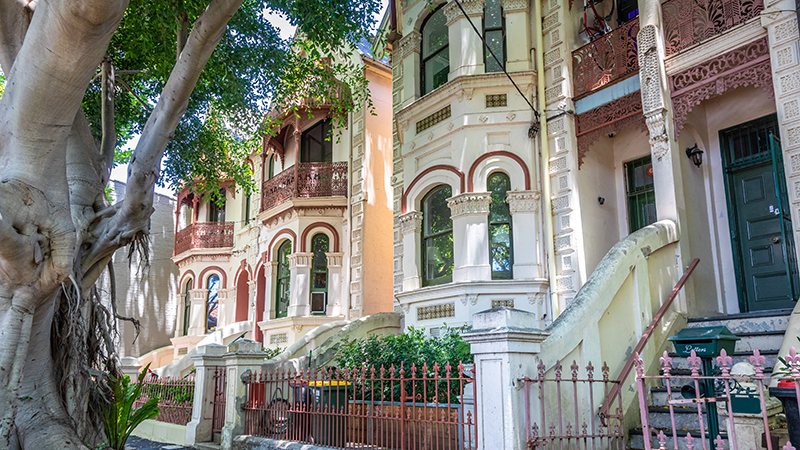[ad_1]
There’s plenty on the horizon to reinforce the fact that in real estate, nothing lasts forever, according to Tim McKibbin, Chief Executive Officer, REINSW.
In many ways, 2022 kicked off as expected in New South Wales, writes Tim McKibbin, Chief Executive Officer, Real Estate Institute of New South Wales (REINSW) for Australian Property Investor Magazine.
The surge in listings we expected in February came to fruition. From late 2021, REINSW members were reporting that a strong wave of new properties would become available early in the new year and these would be met with a heavy weight of demand.
Auction clearance rates are a temperature check of the market and even as volumes increased, clearance rates of 70 per cent-plus were achieved through February. With peak growth having passed, prices returned to a more stable, steady state.
Most vendors are in a comfortable position. Having enjoyed a major uplift through the boom, prices have now settled in a new, elevated place. This settling has resulted in buyers – those buyers with the means to purchase, that is – becoming increasingly confident. They’re sticking to their guns and the offers they’re submitting are firm. But they are active in large numbers.
Ultimately, the supply-demand imbalance that has characterised the NSW property market for some time ensured a relatively predictable market through January and February.
And yet, there’s plenty on the horizon to reinforce the fact that in real estate, nothing lasts forever.
Rates and the RBA
Interest rates are never far removed from the discussion. More recently, we’ve had economists forecasting a rise as early as June. For its part, the Reserve Bank has repeatedly emphasised its willingness to be patient. Time will tell, but it appears an upward movement in the cash rate is imminent.
This shouldn’t be a surprise and it’s certainly no cause for panic. Among other things, a rate rise will tell us that the economic recovery is gathering momentum (in no small part thanks to the major role the real estate industry plays) and that the employment outlook is improving.
For the market, it’s reasonable to expect a rate rise will impact property prices with downward pressure. However, prices have moderated anyway. Historically, it has taken multiple cash rate movements to filter through to noticeably impact prices and for some buyers, a mild increase in rates offset by flatter prices might be viewed as a negligible trade-off.
Of course, the demand pool can be divided into two: those with the means to purchase and those for whom a property purchase remains a pipedream.
More affordability misfires
For first home buyers, the landscape remains really tough.
In NSW, there are new schemes and taxes in play to apparently help affordability. Regrettably, too often these add to the demand side of the equation.
Demand outweighing supply is the reason for price growth – it’s economics 101 – which is why these schemes risk being counterproductive.
The most recent ‘solution’ is a shared equity plan announced to coincide with the recent by-elections in the state. The premise is that Government contributes to the cost of a first home buyer’s home in return for part ownership of their property.
The reality will create something truly strange, largely because of the ever-present menace of stamp duty. Under the scheme, a first home buyer would purchase their home with Government help and pay stamp duty to the Government for the ‘privilege’, effectively refunding the Government for the stake it has acquired in their home.
A recognition of the burden of stamp duty was supposedly behind the Government’s plan to introduce a property tax, swapping one bad tax for another.
Details have been sketchy to date but from what we can tell, it involves purchasers choosing to pay stamp duty up-front or an ongoing tax for as long as they own the property. Somehow, this is expected to deliver an improvement in affordability.
The pitfalls are numerous. It could potentially place vulnerable people at greater risk by asking them to fork out another ongoing tax. It could create a two-speed market by upsetting demand for properties subject to different tax structures. But the most obvious point remains: you can’t tax something to make it cheaper.
In NSW, Government has proven time and again its inability to solve the affordability problem. It’s a fine balance, but to improve affordability the market needs Government support, not Government intervention.
Supply remains the key
In NSW, our State Government has been found wanting, so whether they’re prepared or not, more and more responsibility falls on local Governments.
At the local level, especially in those regional areas which have come under extreme pressure through the pandemic, these wheels need to start turning now, if they haven’t already.
There must be proper commitments to appropriate housing supply targets underpinned by clear expectations of developers, which must in turn be supported by collaborative, not adversarial, relationships.
The price of property hinges on demand and supply. Government continues to offer the blunt instrument of intervention when the delicate hand of support is needed to level this imbalance.
[ad_2]
Source link

